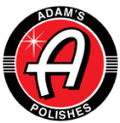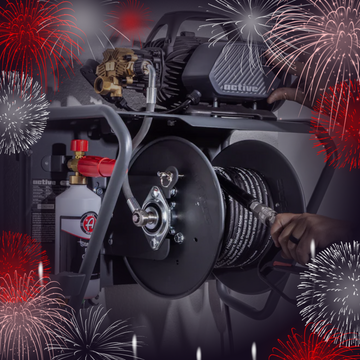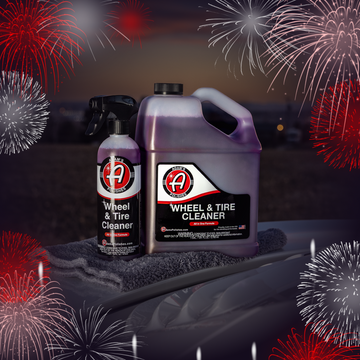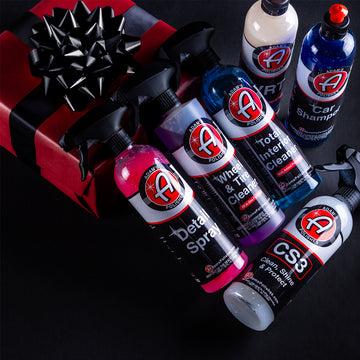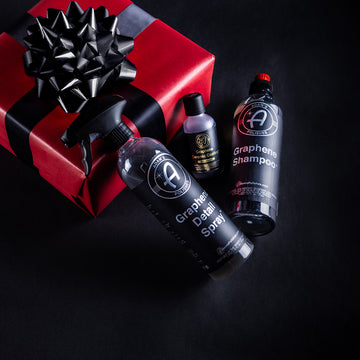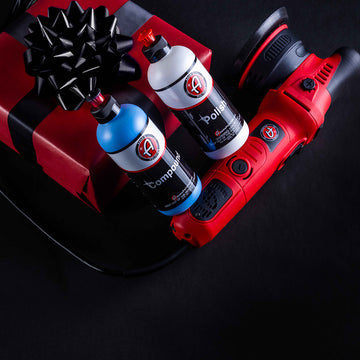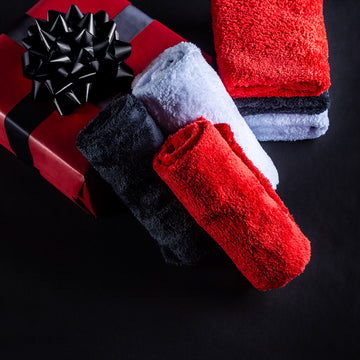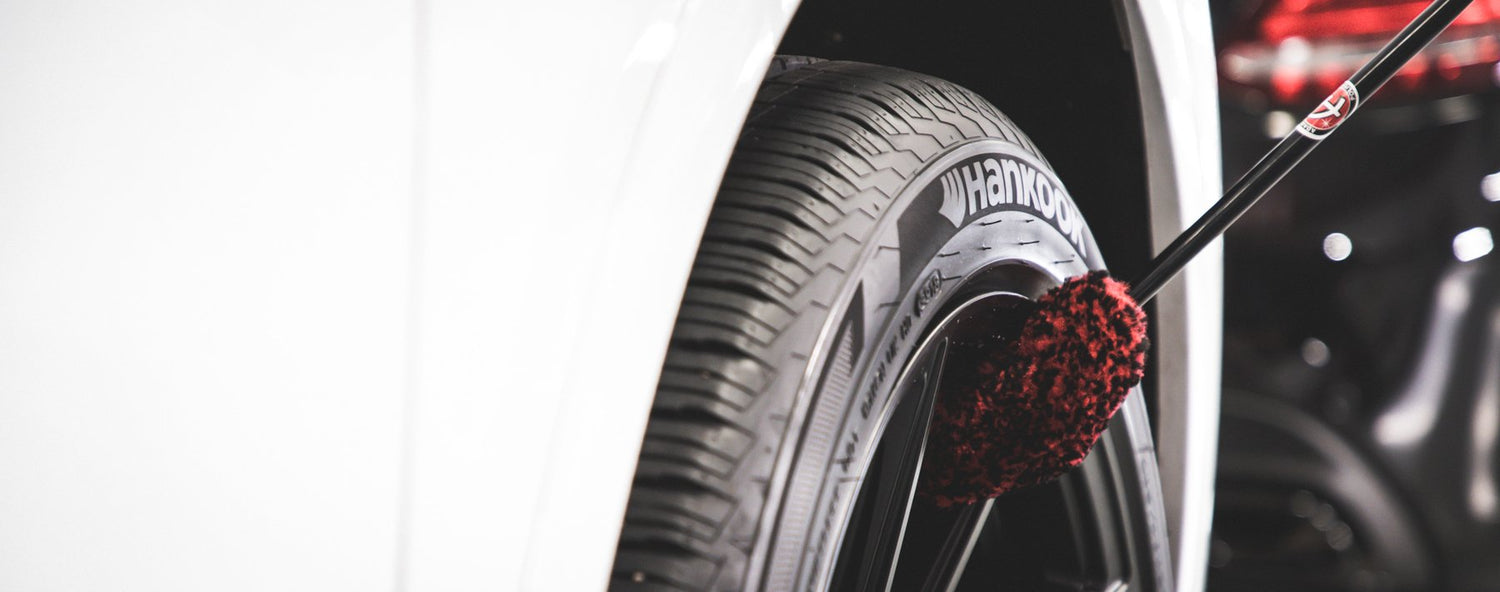Chances are you've encountered tire blooming and you don't even know it. Blooming is what causes a tire to look brown. That new set of tires that you have to scrub over and over again to get them to look black, or the tires on a car you detail less frequently that are closer to the color of chocolate than they are black. Modern rubber compounds are becoming increasingly complex, far more than most people realize. Tire manufacturers are continually pushing the envelope with chemistry and design to create tires that can keep up with the demands of today's cars and drivers. Higher mileage, more miles per gallon, better all-weather traction, or high speed and cornering as cars get better, faster, more intense the tires they roll on must change to keep up. We expect increased performance from our vehicles and tires are an integral part of that, but rarely do we take the time to understand what exactly has changed about tires other than going from bias ply to radial in the late 1960s.
What does this all have to do with your tires turning brown? Read on.
Antiozonants:
An antiozonant is probably something you've never heard of. Its an organic compound added to rubber materials that prevent, or at the very least, slows the deterioration caused by exposure to the elements. Antiozonants are used as an additive in almost all of the exterior rubber and plastic parts to one degree or another, but they are most prevalent in tire manufacturing. The antiozonant additive keeps plastics and rubbers from becoming dry, brittle, oxidized or cracking. It does this by preventing the surface of the material from oxidizing and keeps the material pliable.
Thanks to antiozonants in rubber compounds we have high mileage tires, performance tires, and everything in between. Without it sports cars would shred tires incredibly fast after just a few high speed turns or long track runs where the tires were heated up. Even your daily driven commuter car would need tires far more often as the sun and heat slowly rotted away the rubber compounds.
Tire Blooming
Tire rubber compounds are designed in a way that allows the antiozonant to continually work its way to the outside of the tire and as such, continually keeps the outer surface and sidewall pliable and resistant to oxidation. Once antiozonant reaches the outside of the tire and is exposed to air and moisture it oxidizes, the result being a brownish residue. The term for this ugly brownish tire look is 'tire blooming'. Just like metals left exposed to the outside world will slowly begin to rust (oxidize) as it is exposed to water and air, so does the antiozonant component of the tire rubber. Making matters worse is the use of mold releases in the manufacturing processes. These lubricant type chemicals provide a non-stick surface for the inside of a tire mold. The mold releases chemical bonds with the tire and hold antiozonants onto the surface of the tire. While some people will point to mold release as the primary and/or only source of tire blooming, it is in fact often times only a part of the problem. Even after the removal of mold release, a tire will continue to push antiozonant to the surface allowing the brown residue to return.
Color Changing Wheel Cleaners
Wheel cleaners used to dissolve metallic contamination, like our Wheel Cleaner, can have an accelerating effect on the oxidation of antiozonant. The reaction you see when brake dust is turned to a reddish slurry by Wheel Cleaner or a similar product is, in a very simplified way, oxidation. The chemical reacts with the metallic contamination and begins to dissolve it, allowing it to be easily rinsed away or agitated with a brush.
Tires that have not been cleaned properly before or have been left uncleaned for long periods of time will have substantial amounts of the antiozonant built up on the surface of the tire. When an active wheel cleaner comes into contact with this buildup it will accelerate the browning or blooming. Because of this it's imperative to regularly scrub tires to remove the buildup of antiozonant and 'dead' rubber - think of it almost like exfoliating your skin. If you routinely use our Wheel Cleaner or similar color changing wheel cleaners for their ability to remove stubborn brake dust then be sure to spend an extra couple of minutes scrubbing your tires as well.
Does this necessarily mean that you should discontinue the use of Wheel Cleaner? No, but it should be used with the understanding that the tire needs deep cleaning after the wheel to remove any residue or prevent tire blooming acceleration as a result of the oxidation process. By spraying your Tire & Rubber Cleaner first during your process, it’s not only allowing the Wheel Cleaner to be diluted, but also allowing the tire to begin getting to clean rather than further browned with the Wheel Cleaner residue! Abrading the tire sidewall to remove this will prevent blooming in the first place - the reason your side walls brown, but your treads don't is that the treads are continually worn away by driving so the surface never is allowed to sit long enough to display blooming.
It’s Not Always The Silicone
For years the prevailing thought has been that silicone based tire dressings are the culprit for brown tires. Read any number of forums and the first thing most casual detailers will point to is the choice of tire shine the person with the issue uses. While silicone can be a messy and sticky solution to making your tires shine it isn't always the main culprit of the brown issue.
Most browning related to silicone will be due to the silicone holding dirt and debris on the tires surface, not the tire itself turning brown. This type of browning is very easy to remove as silicone dressings also remove with scrubbing and a citrus-based degreaser like Tire & Rubber Cleaner.
Adam’s Tire & Rubber Cleaner is the only cleaner that drastically sets your vehicle apart from the rest on the road. Tire & Rubber Cleaner cleans discoloration, oxidation, and ugly mold release agents out of your tire’s sidewall to leave a brilliant, dark, rich surface. Adam’s Tire & Rubber Cleaner strips your tires of any harsh silicone dressings, reduces scuffs, and allows for tire dressings like Tire Shine and VRT to lay evenly, and last significantly longer.
Don't think this means you should immediately start to treat your tires with tons of silicone, there are still a lot of reasons it's not an ideal way to dress your tires, but don't believe the story that your choice of tire dressing is the ONLY source for the brown residue. Silicone and water based dressings can be used and the tire can still exhibit blooming... it's the tires surfaces and/or lack of heavy cleaning more than it is anything you've treated it with.
Removing the Blooming:
Removing the blooming is really a simple process - the use of a good degreasing agent, like Adam’s Tire & Rubber Cleaner, and a stiff bristle Tire brush should be more than enough to remove even the worst blooming within a few treatments. Be sure to rinse the tires extremely well with clean after each cleaning to remove any chemical buildup.
Once the brown residues are removed regular cleanings with Tire & Rubber Cleaner shouldn't need to be as aggressive, but if you notice the blooming returning just scrub well. Adam’s Tire & Rubber Cleaner is a citrus based degreasing solution that combines the power of an industrial strength degreaser with a user friendly citrus based cleaner. Adam’s Tire & Rubber Cleaner contains a unique blend of citrus solvents and surfactants to create a high sudsing formula and removes silicones, greases, wax build up, polymers, and any previously applied dressings to leave your tires looking like new. Adam’s Tire & Rubber Cleaner is an essential part of the first step in basic wash practices when cleaning your wheels and tires first before the remainder of the vehicle comes in contact with water. Adam’s Tire & Rubber Cleaner has set the standard for rubber, tire, and plastic trim cleaning products without using harsh ingredients that are harmful to you or the environment.
The application of a quality water based dressing like VRT or a dressing low in silicone content like Adam's Tire Shine will help slow the reappearance of blooming by providing a barrier between the tire surface and the environment.
You’re cleaning it, not removing it completely
Because antiozonants continue to work their way towards the outside of the tire even a car which sees very little use or doesn't have very dirty tires may experience tire blooming when eventually exposed to oxidizers due to lack of cleaning. As such it is recommended that even relatively clean tires be treated to a semi-regular scrubbing to remove the antiozonants from the outer layer of the tire sidewalls.
Each tire will have a different amount of blooming it is prone to. Some tires may bloom very slowly, while others will bloom almost before your very eyes. The amount of antiozonant and the way the tire is designed to push it to the surface will determine how fast or slow it happens. Regardless, one thing remains true - regular cleaning and dressing of your tires will prevent or at the very least minimize the appearance of brown on your tires.
